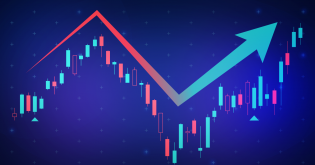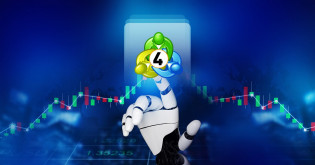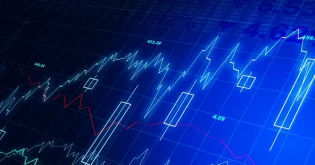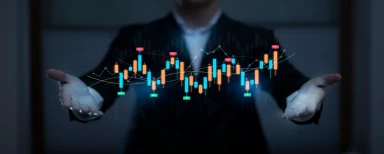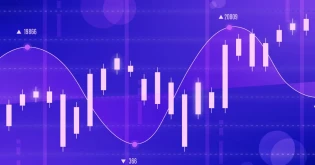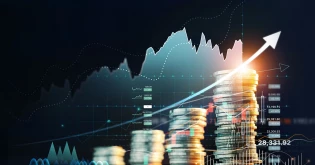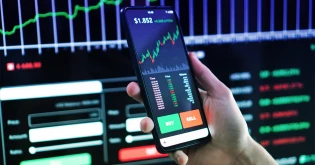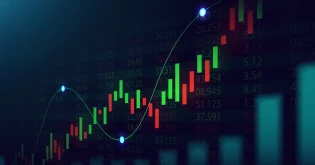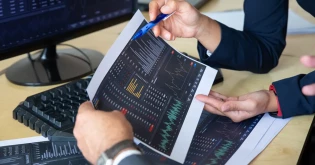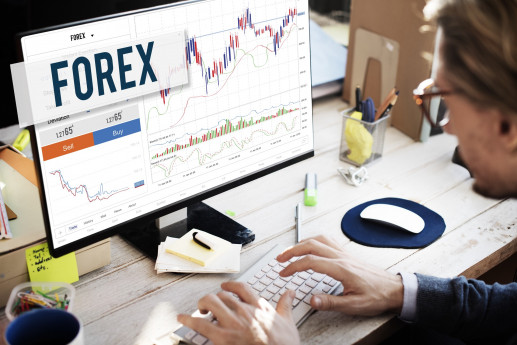-
The term 'Volatility' in the context of forex is a measure of the fluctuation in the value of a currency pair over a specific period. It is a crucial concept for traders to understand, as it can significantly impact the profitability of their trades. In this blog, readers will dive into the idea of volatility in forex and explore its various aspects in detail.
We will begin by defining volatility and explaining how it is calculated. Next, we will discuss the factors influencing volatility in the forex market, such as economic news releases and geopolitical events. We will also examine the relationship between volatility and risk and how traders can use volatility to their advantage when making trading decisions.
Additionally, we will discuss the different types of volatility that traders may encounter in the forex market, such as historical volatility and implied volatility. We will also explore the various tools and strategies that traders can use to measure and manage volatility in their forex trades.
By the end of this blog, readers will have a thorough understanding of volatility in forex and how to use this knowledge to make informed trading decisions.
What is Volatility in Forex market?
Volatility in forex refers to the amount by which the value of a currency pair changes over a specific period of time. It is a measure of market fluctuation and is often used to describe the level of risk associated with investing in a particular currency.
Factors That Influence Volatility
Economic News Releases
Economic news releases can have a significant impact on the volatility of a currency. For example, the announcement of a central bank's interest rate decision can affect the value of a currency. If the central bank decides to raise interest rates, the value of the currency may increase, leading to decreased volatility. On the other hand, if the decision of the central bank leads to lower interest rates, the value of the currency may decrease, leading to increased volatility. Similarly, the release of economic data such as GDP or employment figures can also impact the value of a currency and influence its volatility.
Geopolitical Events
Political events such as elections, wars, and natural disasters can also influence the volatility of a currency. For example, if a country is experiencing political instability, investors may become wary of holding its currency, leading to decreased demand and an increase in volatility. On the other hand, if a nation is experiencing political stability and prosperity, investors may be more likely to hold its currency, leading to increased demand and decreased volatility.
Market Speculation
Expectations and speculation about future market conditions can also influence the volatility of a currency. For example, if investors expect a currency to appreciate in value in the future, they may be more likely to hold onto it, leading to decreased volatility. On the other hand, if investors expect a currency to depreciate in value, they may be more likely to sell it, leading to increased volatility.
Market Demand
The demand for a particular currency can also impact its volatility. If there is a high demand for a currency, its value may increase, leading to decreased volatility. On the other hand, if there is a low demand for a currency, its value may decrease, leading to increased volatility.
Market Supply
The supply of a particular currency can also influence its volatility. Lets say there is a large supply of a currency, its value may decrease, leading to increased volatility. On the other hand, if there is a limited supply of a currency, its value may increase, leading to decreased volatility.
Types of Volatility in Forex Market
The term "volatility" refers, in its most basic form, to the swings in price that assets experience. It takes into account both the opening and closing prices for a given period of time and calculates the difference between the two. Some of the types are:
Historical Volatility
Historical volatility is a measure of the past price fluctuations of a currency pair. It is calculated by analyzing the standard deviation of price changes over a given period, such as the past year or the past month. Historical volatility can be useful for traders as it provides a sense of the level of risk associated with a particular currency pair. However, it is important to note that historical volatility does not necessarily reflect future price movements.
Implied Volatility
Implied volatility is a gauge of the expected future volatility of a currency pair derived from the price of options on the currency pair and can be used to gauge the market's expectations for future price movements. Implied volatility can be useful for traders as it provides insight into how the market is anticipating future price movements.
Relative Volatility
Relative volatility is a measure of the volatility of a currency pair relative to the overall volatility of the forex market. It is calculated by dividing the volatility of the currency pair by the volatility of the overall market. Relative volatility can be useful for traders as it provides a sense of how much a particular currency pair is fluctuating compared to the rest of the market.
Tools and Strategies for Measuring and Managing Volatility in Forex Trades
To calculate volatility through indicators, traders can use formulas such as the Average True Range (ATR), Bollinger Bands, Chande Volatility Index (CVI), or Historical Volatility (HV). These formulas involve gathering data on the high and low prices, closing prices, or daily price changes of a currency pair over a certain time frame, and then plugging the data into the formula to calculate the indicator.
Volatility Indicators
There are various technical indicators that traders can use to measure volatility in the forex market. Four popular volatility indicators include:
1. Average True Range (ATR)
2. Bollinger Bands
3. Chande Volatility Index (CVI)
4. Historical Volatility (HV)
These indicators can provide traders with a sense of the level of volatility in a currency pair and help them to make more informed trading decisions.
Applying Volatility Indicators in Forex Trading
In order to apply volatility indicators in forex trading, traders can follow these steps:
Average True Range (ATR)
1. Choose the currency pair that you want to trade. For example, let's say you want to trade the EUR/USD pair.
2. Select a time frame for the ATR calculation. This could be a number of days, weeks, or months. Let's say you want to use a 14-day time frame.
3. Calculate the ATR using the formula provided above. To do this, you would need to gather the high and low prices for the EUR/USD pair over the past 14 days and plug them into the formula.
4. Plot the ATR on your chart along with the EUR/USD pair.
5. Use the ATR to set stop-loss orders at a certain distance from your entry price. This can help to limit potential losses if the trade moves against you. For example, you might set a stop-loss order 50 pips below your entry price if the ATR is indicating a high level of volatility.
Bollinger Bands
1. Choose the currency pair that you want to trade. Let's continue with the EUR/USD pair.
2. Select a time frame for the Bollinger Bands calculation. Again, let's use a 14-day time frame.
3. Calculate the upper and lower bands using the formula provided above. To do this, you would need to gather the closing prices for the EUR/USD pair over the past 14 days, calculate
the moving average, and then use the standard deviation to calculate the upper and lower bands.
4. Plot the Bollinger Bands on your chart along with the EUR/USD pair.
5. Use the Bollinger Bands to identify potential breakouts and trend reversals. For example, if the EUR/USD pair breaks above the upper band, this could indicate a potential breakout to the upside.
Chande Volatility Index (CVI)
1. Choose the currency pair that you want to trade. For example, let's say you want to trade the GBP/USD pair.
2. Select a time frame for the CVI calculation. This could be a number of days, weeks, or months. Let's say you want to use a 20-day time frame.
3. Calculate the CVI using the formula provided above. To do this, you would need to gather the high and low prices for the GBP/USD pair over the past 20 days and plug them into the formula. For example, let's say the highest price for the GBP/USD pair over the past 20 days was 1.4100 and the lowest price was 1.3800. The CVI would be calculated as follows:
CVI = (1.4100 - 1.3800) / (1.4100 + 1.3800) = 0.023
4. Plot the CVI on your chart along with the GBP/USD pair.
5. Use the CVI to identify potential trend changes. For example, if the CVI is rising while the GBP/USD pair is in an uptrend
Historical Volatility (HV)
1. Choose the currency pair that you want to trade. For example, let's say you want to trade the USD/CAD pair.
2. Select a time frame for the HV calculation. This could be a number of days, weeks, or months. Let's say you want to use a 30-day time frame.
3. Gather the daily price changes for the USD/CAD pair over the past 30 days. This can be done by subtracting the closing price on one day from the closing price on the previous day. For example, let's say the daily price changes for the USD/CAD pair over the past 30 days were as follows:
Day 1: 0.0150
Day 2: -0.0025
Day 3: 0.0075
Day 4: -0.0050
...
4. Calculate the mean of the daily price changes. This can be done by adding up all of the daily price changes and dividing the total divide by the number of days in the period (in this case, 30 days). For example, if the total of the daily price changes is 0.1000, the mean would be calculated as follows:
Mean = 0.1000 / 30 = 0.0033
5. Calculate the variance of the daily price changes. This can be done by taking the difference between each daily price change and the mean, squaring it, and then summing all of the squared differences. For example:
(0.0150 - 0.0033)^2 + (-0.0025 - 0.0033)^2 + (0.0075 - 0.0033)^2 + (-0.0050 - 0.0033)^2 + ... = 0.0015 + 0.0005 + 0.0006 + 0.0010 + ...
6. Calculate the standard deviation of the daily price changes. This can be done by taking the square root of the variance. For example:
Standard Deviation = √0.0044 = 0.066
7. Calculate the HV using the formula provided above. To do this, you would use the standard deviation and the number of days in the period (in this case, 30 days). For example:
HV = 0.066 / √30 = 0.023
Compare the HV of the USD/CAD pair to the HV of other currency pairs. This can help you to choose the most appropriate pair for your trading strategy. For example, if you are picking a pair with high volatility, you might choose the USD/CAD pair. If you are looking for a pair with low volatility, you might choose a different pair.
Conclusion
In conclusion, understanding and managing volatility is crucial in forex trading. By using indicators such as the Average True Range (ATR), Bollinger Bands, Chande Volatility Index (CVI), and Historical Volatility (HV), traders can measure and manage volatility in their trades. These indicators can help traders to identify potential trend changes, set stop-loss orders, and choose the most appropriate currency pair for their trading strategy. Overall, managing volatility is essential for successful forex trading as it can help traders to limit potential losses and maximize their profits.

